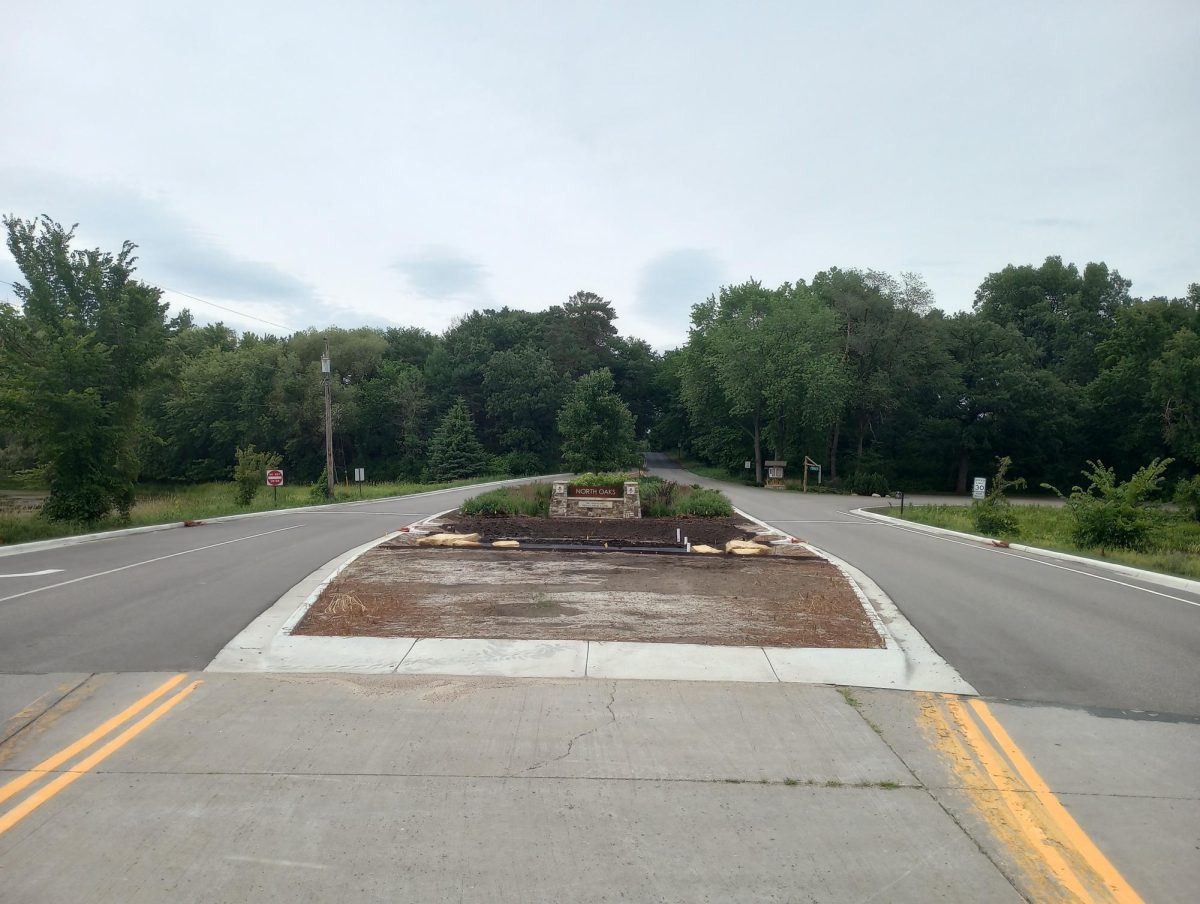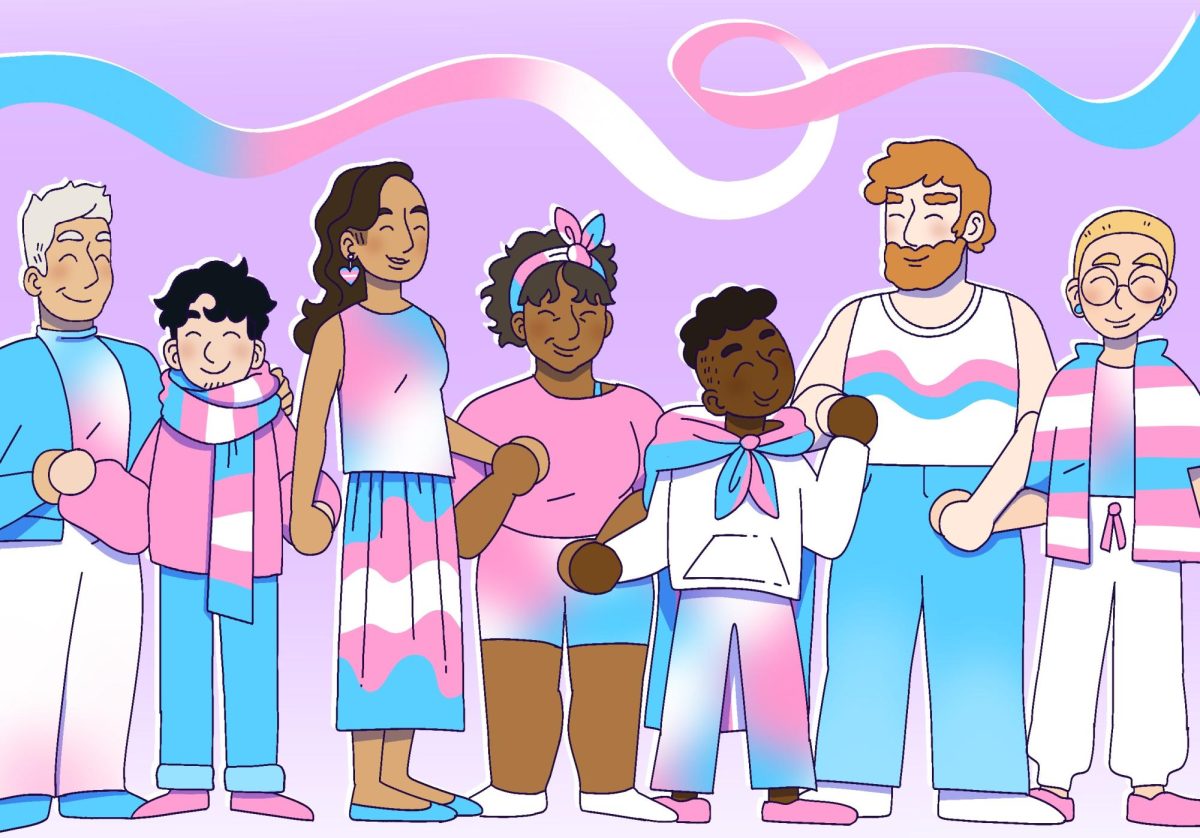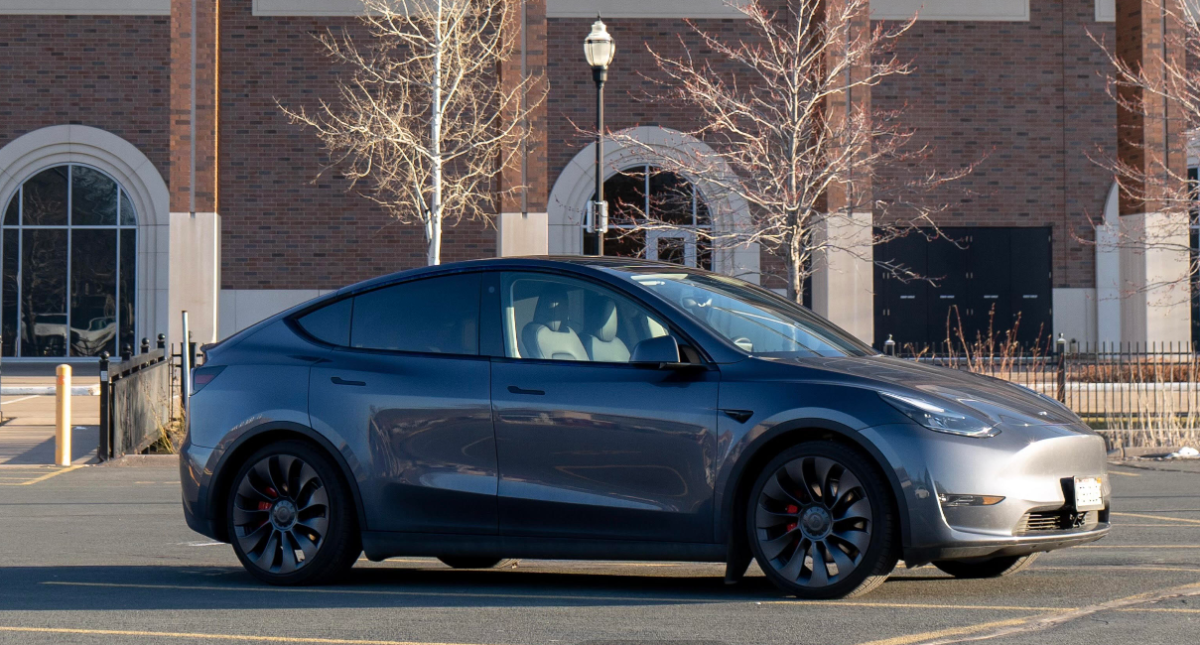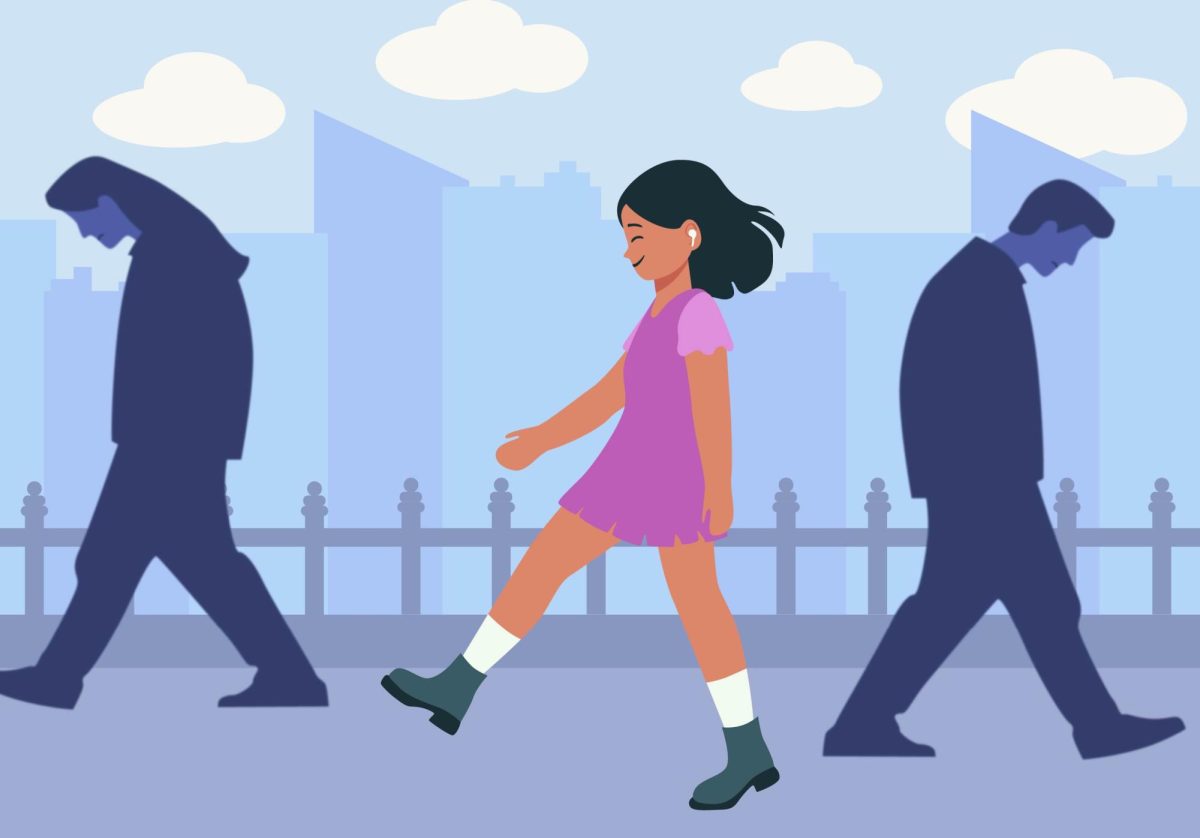The junction where Rice Street ends at Highway 96 in the northern Ramsey County suburbs looks innocuous at first glance.
On the south side of the highway, massive signs read “Vadnais Heights” and “Welcome to Shoreview” on the east and west sides of the intersection, respectively. The latter, in particular, rhetorically indicates an openness, at least in theory, toward the presence of guests, visitors and non-residents.
Meanwhile, on the north side of the intersection, Rice Street turns into Pleasant Lake Road, which winds itself around a grassy median and quickly snakes into the trees and out of sight.
The sign that sits on that median is much smaller than the two opposing it from across the highway, and significantly more terse: “North Oaks — No Trespassing — Private Roads & Land.”
North Oaks, a city of about 5,000 people, was once Minnesota’s largest gated community and was likely the only one in the state to have been a municipality of its own. The gates were removed almost forty years ago, but the city retains an unusual quirk: property lines extend to the middle of roads, meaning that there is no public property anywhere in the city.
The result is an unusual tripartite power-sharing arrangement with three major players: the City of North Oaks, the North Oaks Homeowners’ Association (NOHOA) and the North Oaks Company, the main developer in the city.
The city has authority over municipal planning (something it has fought the company over in the recent past). NOHOA maintains roads and other city amenities traditionally managed by a municipal government. The company owns the parks and conservation land and generally manages new construction on unoccupied plots.
What draws people to live in a community that’s gated in every sense but the physical?
Having the money to live there is certainly a factor. According to data from the U.S. Census Bureau, North Oaks is demographically similar to neighboring communities Shoreview and White Bear Township in terms of race and ethnicity — all three are over 80% white — but is significantly wealthier than both, with a median household income of about $220,000 a year, double that of Shoreview and White Bear.
North Oaks may be the wealthiest city of its size in the entire metro area by this metric. Ultra-rich lakeside enclaves like Minnetonka Beach and Sunfish Lake have it beat but are significantly smaller. Even suburbs with a reputation for being fairly affluent, such as Edina and Wayzata, are nowhere near, with median incomes still much closer to $100,000 a year.
Wealth is certainly a determining factor for North Oaks residents. But privacy and seclusion may be just as crucial to determining why residents choose to live there.
A posting on the city’s website reminds residents solicitation is trespassing and should be reported to the Ramsey County Sheriff’s Office. NOHOA distributes identification badges for cars and bicycles so that residents can quickly tell if someone is one of their own.
One notorious example of this mindset took place in 2008 when Google was first collecting data for its Street View service. The city sent a cease-and-desist, on the grounds all imagery collected in the city limits had been acquired illegally and demanded it be expunged.
Google complied.
There are no doubt other draws, such as the privately managed trails, parks and conservation land in the city. But even without gates, there’s no doubt that exclusivity is a draw.
Is this a healthy mindset?
“It’s less about exchange or encounter with a public that anyone and everyone who you know is able to access public space, and it’s more about having control over land, over streets, over parks, so that you know who you can find and encounter and engage in these types of locations,” said Fernando Burga, a professor at the Humphrey School of Public Affairs.
Many Minnesota suburbanites and rural residents have expressed the view that the metropolitan core, and Minneapolis in particular, is a dangerous or foreign place that must be kept at arm’s length.
Minneapolis has been compared to Gotham City and described as a dangerous place where one cannot even walk down the street without being accosted by suspected criminals, a city that is a “shell of its former self” where residents and leaders alike are disconnected from reality.
This mindset, brazen or latent, appears in a variety of places: nauseatingly racist comments on panic-stoking social media accounts like Twitter’s CrimeWatchMPLS, letters to the editor in local news outlets like the Star Tribune and even municipal governments, as seen in White Bear Lake’s rejection of Metro Transit’s proposed Purple Line rapid bus route.
It is also not always accurate. At least some of the recent firework mayhem in Dinkytown has been attributed to suburban youth. In the western suburb of Orono, teenagers with fireworks started a fire that damaged five boats and a pier on Lake Minnetonka.
North Oaks is not unique in wanting to keep the hustle and bustle of the city out.
Where it differs from other communities is the extent to which it chooses to go to achieve that end — perhaps not so far as gated communities, which are frequently criticized for being an extreme embodiment of that attitude, but certainly to the same extent with regards to potential legal consequences for interlopers.
“What kind of civil, civic discourse can happen in public space if it is private?” Burga said. “There needs to be more questions asked about this. And that’s where it’s tough to really understand what’s going on in these communities.”














